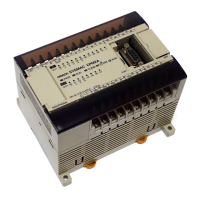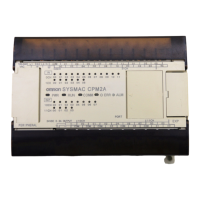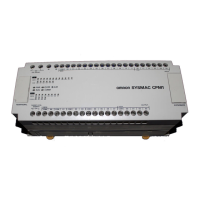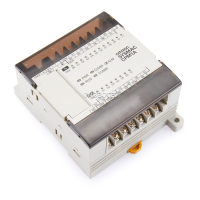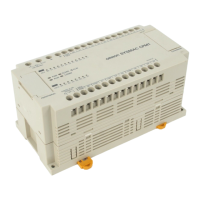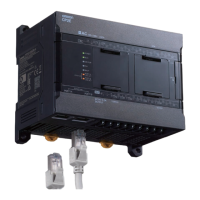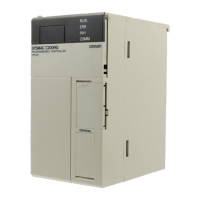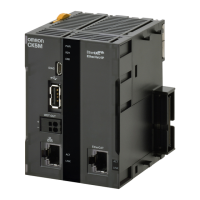162
Programming Console Operations Section 4-2
4. Press 123 to specify 123 as the starting program address.
5. Press the MONTR Key to clear the specified regions of memory.
4-2-3 Memory All Clear
With the upgrade from CX-Programmer version 1.2 to version 2.0, I/O com-
ments can be used with the CPM2A. Use the Memory All Clear operation to
delete data from the I/O comment area. All I/O memory area data will be
cleared by this operation and the area size will be set to the default value of
2.0 Kwords.
The Memory All Clear operation must be performed to clear the program
including the I/O comment area. The normal operation to clear memory will
not clear the I/O comment area.
4-2-4 UM Allocation Information Read
The UM allocation information can be read when an I/O comment area has
been set from the CX-Programmer (Ver. 2.0 or higher) to display the I/O com-
ment area and ladder program area sizes. Refer to the CX-Programmer Ver-
sion 2.0 (or higher) Operation Manual (W437) for information on changing the
size of the I/O comment area.
CNT
00000MEMORY CLR?
HR DM
B
1
C
2
D
3
00123MEMORY CLR?
HR DM
MONTR
00000MEMORY CLR
END HR DM
RUN MONITOR PROGRAM
No No OK
CLR SET NOT
RESET
EXT
00000MEM ALLCLR?
MONTR
00000MEM ALLCLR?
END
RUN MONITOR PROGRAM
OK OK OK
CLR FUN VER
CA LAD
02 04.1
I/O comment area: 2 Kwords
(2,048 is truncated for display.)
Ladder program area: 4.1 Kwords
(4,096 is truncated for display.)
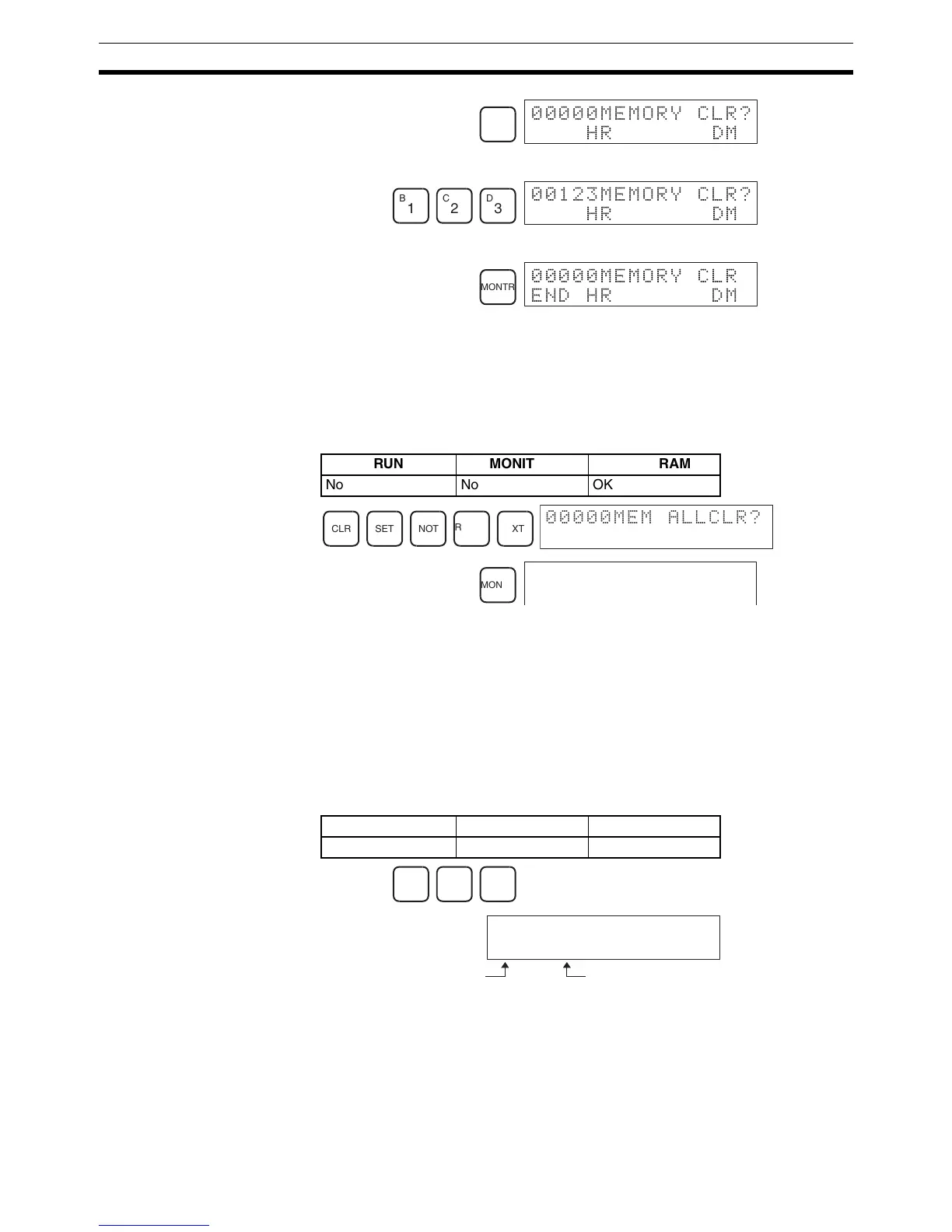